Many splendid things aboard traditional Indonesian superyacht
Luxury meets tradition on an exquisite superyacht sailing amid the marine wonders of Raja Ampat, Indonesia.
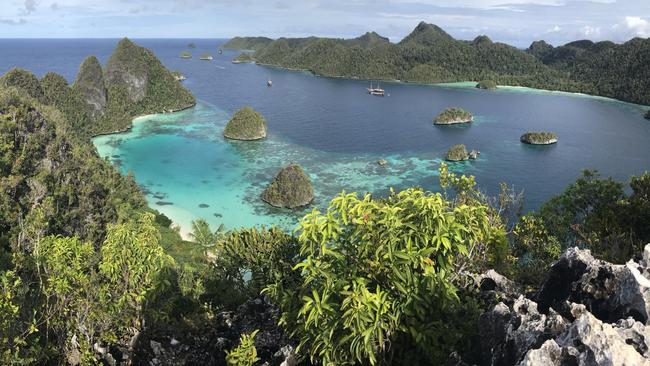
It’s all about that view — mushrooms of limestone karst ringed by turquoise bursting forth from a luminous blue-green ocean. We have braved the heights of Mount Pindito, grappling with rocks and vines on a steep ascent to capture what is surely one of the most Instagrammable panoramas in the world. Raja Ampat, in the Indonesian province of West Papua, is as stunning in real life as it is on screen. Hashtag #nofilter, indeed.
From this high point on the island of Wayag, we can see perfect slivers of white sand, expanses of coral, and vast tracts of virgin jungle. Also visible in the bay is our luxurious waterborne chariot, Prana by Atzaro, a timber superyacht purpose-built in the traditional Indonesian phinisi style and launched last May.
Constructed over two years from teak and ironwood the colour of honey, the two-masted vessel is huge at 55m long, more than 11m wide, with four decks and myriad beanbags and comfy corners to stretch out while sipping mojitos. Nine cabins accommodate a maximum 18 passengers; my enormous suite, called Batavia, stretches the full beam of the yacht and comes with plush king bed, L-shaped lounge, full-size bathtub and double rain shower. There’s a TV loaded with 200 movies, an espresso machine and minibar well-stocked with French champagne, imported beer and mineral water. But the piece de resistance is the private aft deck, where a pair of curved daybeds that could sleep a family of four are awash with scatter cushions.
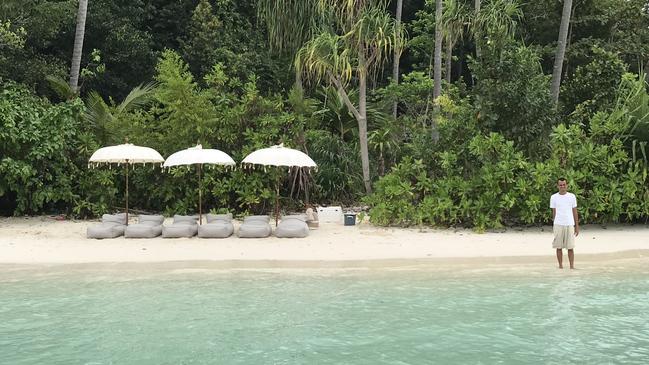
The decor is all softly chic cream and white, with leather accents amid the timber, and indigenous headdresses and cowrie-shell necklaces to add a local touch. All of which would be lovely to while away the hours in, if there weren’t so much to see and do.
Wayag is one of the four main landmasses, or “four kings” as the name Raja Ampat translates, that dominate an archipelago of more than 1500 islands. Almost half the region has been protected since a network of Marine Park Areas was established in 2007.
The goal is to keep fishing, and the destructive practices of dynamite and cyanide harvesting, at bay, preserving the coral reefs, mangroves and marine biodiversity for which Raja Ampat is renowned. Located in a current known as the Indonesian Throughflow, the region receives a constant supply of nutrient-rich water that makes for an abundance of healthy, happy fish and coral, plus deliriously happy snorkellers and scuba divers.
The dive site of Cape Kri, south of Waigeo Island, holds the record of 283 for the number of species counted in one dive. It doesn’t disappoint. Two black-tip reef sharks glide past as shoals of blue-stripe snapper hug a reef resplendent with bright sponges and pink and blue finger coral.
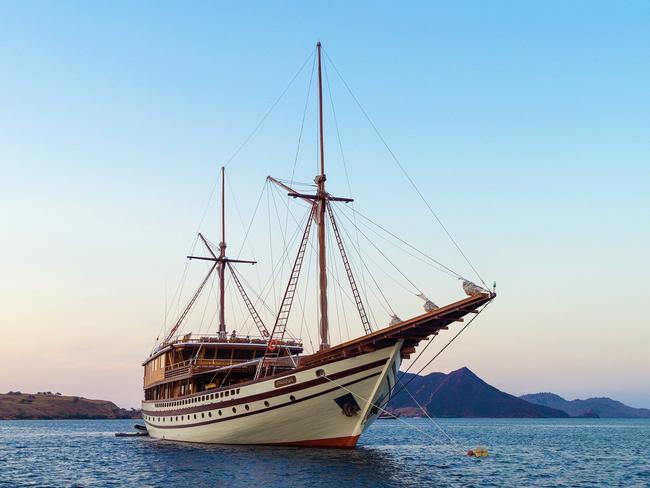
At a site known as Melissa’s Garden, we are surrounded by hundreds of vivid yellowback fusiliers that swirl in tightly choreographed unison as though posing for a National Geographic photo shoot. There are table coral large enough to seat 12 for dinner and sweeping gardens of staghorn coral with bright blue tips.
But my favourite dive site is at the village of Sauwandarek, where at a depth of just 6m the pylons of the jetty are apparently the place to be seen if you’re a fish. Snapper and sweetlips are the cool kids, eyeing me warily from their huddle under coral that has grown, remarkably untouched, under the pier. Stripy sergeants dance around uninhibited and unicorn fish flit here and there. But it’s the batfish who are the life of the party; they’ll “talk” to anyone. Turn your head and there will be one right in your face, swinging by to say hi.
Those who don’t want to scuba dive are not neglected. When not snorkelling, guests amuse themselves with stand-up paddle boards, kayaks and a wakeboard. One morning we visit a sustainable pearl farm run by Australian company Atlas Pearls, where staff from Down Under lead a life in splendid isolation, three months on, one month off. At a Marine Park rangers’ station, reef sharks swirl around our ankles in the shallows in pursuit of raw chicken thrown their way.
Each time we return to the yacht, smiling Indonesian crew members are waiting with refreshing flannels and drinks in exotic combinations such as soursop and blue curacao, and pineapple with basil.
I surrender to the firm touch of onboard masseuse Anna, from the island of Sumba, whose merciless approach leaves me zombified for a good hour. Only a stiff G&T mixed by French cruise director Cedric Lesenechal can rouse me from my stupor.
On days when we embark early on excursions, we become accustomed to having two morning meals. “First breakfast”, as it becomes known, comprises expertly brewed espressos and lattes, along with fresh fruit platters, pastries and chia seed and granola pots. When we return from our adventures for “second breakfast”, eggs benedict, French omelettes and smashed avocado on sourdough, plus Asian offerings, are the order of the day. Three-course lunches are enjoyed at two timber dining tables built into the foredeck under shade-sails.
One afternoon, we are deposited on a pristine white beach where exuberant chef Fauzi has prepared a feast of barbecued lobster, fish and steak with a rainbow of salads. We dine under pretty white parasols at tables laid with linen, our toes in the sand. It’s a highlight of our five days inhabiting the superyacht universe.
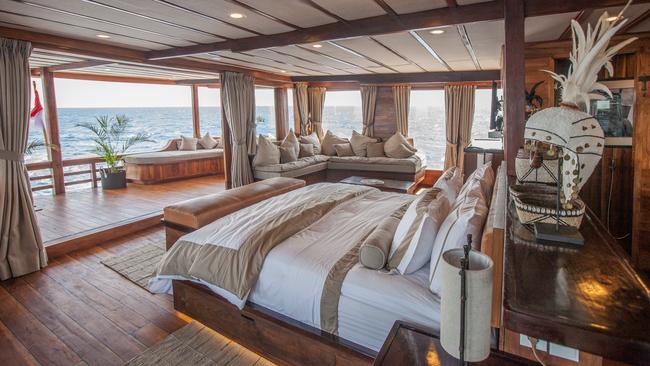
One evening the hard-working crew creates an outdoor cinema on the top deck, and we lounge on beanbags in front of a wide projection screen, sipping glasses of wine.
When another phinisi circles us, apparently assessing the cut of our jib and possibly sussing out which film we are watching, it feels outrageous that in the vast emptiness of Raja Ampat, another yacht should encroach on our space. It is suggested the intruder has Tom Cruise on board and we congratulate ourselves for having Wes Anderson’s Moonrise Kingdom, not Mission Impossible, on the screen.
Although Prana by Atzaro is fully rigged, we motor most of our voyage at a leisurely eight knots. The distances being travelled are too great to rely on wind alone. But in Aljui Bay, the crew sets about the deck in a well-practised whirl, unfurling canvases and taming spaghetti tangles of ropes. Within 30 minutes the yacht has been transformed; what was already a floating work of art is now a glorious vision of nautical romance, its seven sails billowing in the breeze.
In 2017, UNESCO declared the art of phinisi boat-building, which hails from Sulawesi, a “masterpiece of oral and intangible heritage of humanity”. That’s quite a mouthful, but certainly in Prana by Atzaro’s case, the craftsmen have produced a thing of great beauty.
For our last day, we arrive early at Piaynemo, a geodiversity hotspot on the western fringe of the regency. For those who don’t enjoy scrambling hand over fist up mountains, this is the place to get another classic Raja Ampat view.
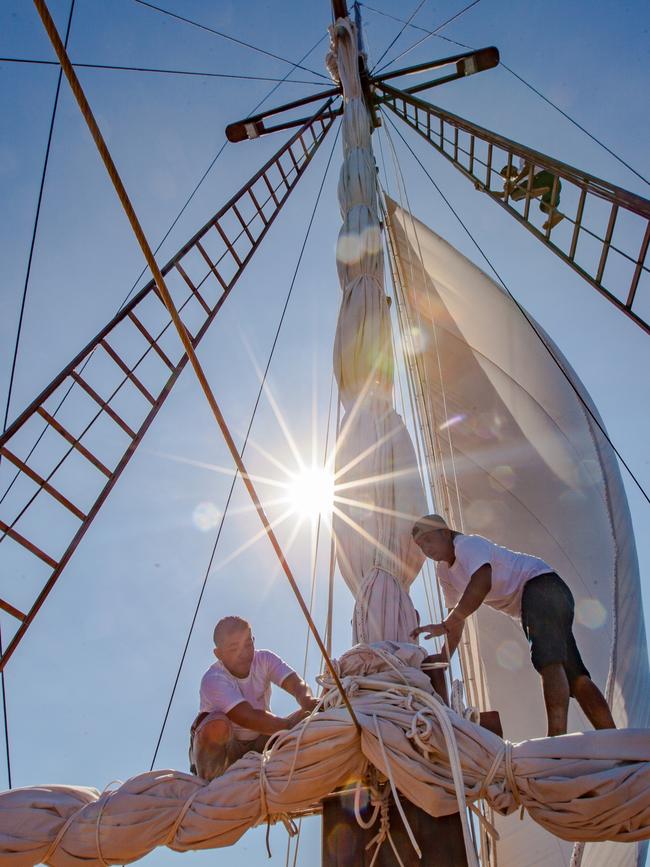
It’s an easy 10-minute climb up sturdy boardwalks and stairs, leading to a trio of viewing platforms. The bay stretches before us, dotted with rocky pinnacles; a lone canoe slices the water’s glassy surface.
There is much clicking of cameras and waving of selfie sticks, but it is back at sea level that the true allure of the place is revealed. The tenders weave between limestone mounds over emerald waters so clear it’s like being in a glass-bottom boat.
We slip through a narrow passage and suddenly we are in an exquisite lagoon. Shaped like a natural amphitheatre, it’s surrounded by cliffs sprouting hardy palms and pandanus, and we have it all to ourselves, apart from a solitary turtle spied near the shore.
Within moments we are all in the water, unable to resist its silky, salty charm. Those panoramas of islands obtained from on high are all well and good, but it’s the ocean that is Raja Ampat’s most precious jewel.
Penny Hunter was a guest of Prana by Atzaro.
-
More to the Story
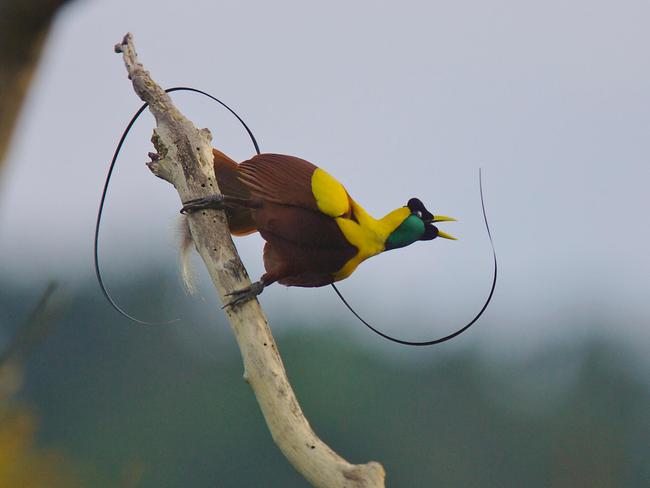
As we alight from our tender boats in the pre-dawn gloom, I feel like a member of an elite SAS team on a covert mission. Instructions are issued in whispers as we don headlamps to light our way over the sand and through the slumbering village of Saporkren. We are here, in the southwest corner of Waigeo Island, to see the famed and apparently very frisky bird of paradise (pictured). Every morning, every day, a number of the birds come to the same cluster of trees on a hilltop to mate. To witness this spectacle, an early start is required, followed by much slipping and sliding up a muddy slope. We cling to vines, rocks and crudely fashioned handrails on the path, sweating in the heavy humidity. A curious cuscus pokes its nose through the jungle foliage before turning tail and disappearing. As the sun begins to shed more light on the scene, we turn off torches and our West Papuan guide, “Mr Dennis”, signals for silence. We halt in a clearing towered over by three trees and wait. But not for long. It seems these birds are only after one thing and they know just where and when to get it. There is a flash of rusty-red feathers, and another, and soon we are all spotting the males’ glorious plumage with its duet of long, wiry tail feathers. What a song and dance they make of their wooing, bobbing up and down and prancing around with their wings on display. We watch for 45 minutes, craning necks and wielding zoom lenses, to try and get the perfect shot. Eventually, with conquests made, the birds begin to disperse. And to think they’ll do it all again tomorrow.
Penny Hunter
-
In The Know
Prana by Atzaro is available for charter in Raja Ampat and Komodo on voyages ranging from four to 10 nights. The yacht is owned by Atzaro, a hospitality group based in Ibiza, Spain. Raja Ampat itineraries depart from Sorong, the largest city in the Indonesian province of West Papua, best reached from Jakarta or indirectly from Denpasar, Bali. From $US12,500 ($17,600) a night for the whole yacht, including meals, soft drinks and house beer and wine, one massage per guest, laundry and Wi-Fi when available. Maximum 18 guests.

To join the conversation, please log in. Don't have an account? Register
Join the conversation, you are commenting as Logout